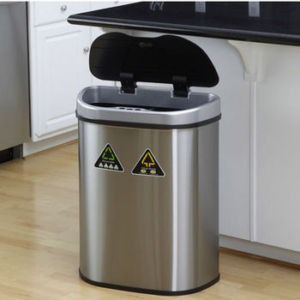Understanding How Home Inspectors Test Air Quality
When it comes to maintaining a healthy living environment, air quality plays a role. Breathing in clean air is essential for our well-being, and that’s where home inspectors come into the picture. Home inspectors have the expertise to assess and improve air quality in residential properties. In this blog, we will delve into the methods home inspectors use to test air quality, providing a comprehensive guide to understanding this crucial aspect of home inspections.
Understanding Indoor Air Quality (IAQ)
Before we dive into the testing methods, let’s first understand what indoor air quality (IAQ) is all about. IAQ refers to the quality of the air within buildings and structures, especially as it relates to the health and comfort of occupants. Poor IAQ can lead to a range of health issues, including allergies, respiratory problems, and even more serious conditions. Common indoor air pollutants include volatile organic compounds (VOCs), mold spores, pollen, dust mites, carbon monoxide, radon gas, and many others.
The Role of Home Inspectors in Assessing Air Quality
Home inspectors play a vital role in evaluating the overall condition of a property, including its air quality. Hiring a qualified home inspector can help you identify potential issues and take proactive steps to ensure a healthy living environment. During their assessment, home inspectors examine various factors that can impact air quality, such as ventilation systems, pollutant sources, and potential health risks associated with specific contaminants.
Common Air Quality Tests Conducted by Home Inspectors
Home inspectors utilize several methods to test air quality and identify potential pollutants. These tests provide valuable insights into the indoor environment and help determine the appropriate course of action. Let’s explore some of the most common air quality tests conducted by home inspectors:
1. Visual inspection and assessment: Inspectors visually examine the property to identify potential sources of pollution, such as mold growth, water damage, or chemical storage.
2. Temperature and humidity measurements: Monitoring temperature and humidity levels helps assess the comfort and moisture content within the home, which can impact air quality and mold growth.
3. Testing for volatile organic compounds (VOCs) and formaldehyde: VOCs are emitted by various household products and can cause respiratory issues. Formaldehyde is a common indoor air pollutant found in building materials and furnishings.
4. Assessing particulate matter and dust levels: Particles in the air, including dust, pollen, and pet dander, can trigger allergies and respiratory problems. Inspectors use air samplers to measure particulate matter concentration.
5. Testing for carbon monoxide and radon gas: Carbon monoxide is a deadly gas emitted by appliances, while radon gas is a radioactive gas that can seep into homes through the ground. Inspectors use specialized detectors to measure their presence.
6. Evaluating ventilation systems and air exchange rates: Proper ventilation is essential for maintaining good air quality. Home inspectors assess the efficiency of ventilation systems and evaluate air exchange rates.
Advanced Air Quality Testing Methods
In some cases, advanced testing methods may be necessary to assess specific air quality concerns. These methods include:
1. Mold and mildew testing and analysis: Inspectors collect air or surface samples to determine the presence of mold spores and assess the extent of mold contamination.
2. Allergen and pollen testing: Testing for common allergens helps identify specific triggers for allergic reactions and allows for targeted remediation strategies.
3. Bacterial and viral analysis: In certain situations, microbial analysis may be required to detect harmful bacteria or viruses that can affect indoor air quality.
4. Testing for asbestos and lead contamination: Older homes may contain asbestos or lead-based paint, both of which can release hazardous particles into the air Inspectors collect samples for laboratory analysis.
5. Assessing electromagnetic fields (EMFs) and radiation levels: Inspectors may evaluate the presence and intensity of electromagnetic fields and radiation sources, such as electrical wiring or nearby cell towers.
Interpreting Test Results and Recommendations
Once the air quality tests are completed, home inspectors provide you with detailed results and recommendations. Interpreting these results is crucial to understanding the significance of the findings. The inspector will explain the potential health risks associated with specific pollutants and provide guidance on improving air quality. Recommendations may include actions such as repairing ventilation systems, remediation of mold or lead contamination, and installing air purifiers or filters.
DIY Tips for Improving Air Quality
While home inspectors can provide valuable insights and recommendations, there are also steps you can take to improve air quality on your own. Consider the following DIY tips:
1. Maintain a clean and well-ventilated home environment: Regularly clean and vacuum your home to minimize dust and allergens. Open windows to allow fresh air circulation whenever possible.
2. Proper use and maintenance of HVAC systems: Change air filters regularly and have your HVAC system inspected and serviced annually to ensure proper operation and filtration.
3. Use air purifiers, filters, and dehumidifiers: These devices can help remove airborne particles, allergens, and excess moisture from the air, enhancing overall air quality.
4. Reduce the use of chemical-based products: Opt for natural or eco-friendly alternatives to minimize the release of volatile organic compounds (VOCs) from cleaning products, paints, and other household items.
5. Ensure proper ventilation in kitchens and bathrooms: Install and use exhaust fans in these areas to remove moisture, odors, and pollutants generated during cooking or bathing.
Maintaining good air quality is crucial for our health and well-being. Home inspectors play a significant role in assessing and improving air quality in residential properties. By conducting various tests and evaluations, they can identify potential issues and provide recommendations for creating a healthier living environment. By following their guidance and implementing DIY strategies, you can take proactive steps to ensure clean and fresh air within your home. Remember, prioritizing air quality is an investment in your health and the well-being of your loved ones.






